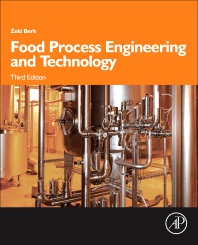First steps
Chilton breaks the GFSI accreditation process into four steps as he works with processors. “We start with a gap analysis where we do an initial assessment of what types of programs a processor currently has in place compared to the GFSI standard requirements.” The gaps indicate what the processor will need to do to come into compliance.
Phase two involves program development. GFSI requires a written policy manual containing all the procedures that document how a processor complies with standards. The consultant helps the processor with this process so the end result is a written policy manual.
According to Chilton, the third phase focuses on implementation, with the consultant ensuring all record-keeping requirements and programs have been fully implemented. This includes a mock audit to be sure all gaps have been closed and the processor is actually prepared to go through the certification audit. The consultant also develops an audit strategy showing how the processor can be successful during the audit itself. The consultant coaches various departmental managers from all major areas such as operations, QA, maintenance, sanitation, and shipping and receiving.
The fourth and final phase is audit support. A consultant is onsite with the processor to address any issues that might come up and get them resolved so the processor can pass the audit the first time, preventing the need for a surveillance audit. (Surveillance audits are conducted when a regularly scheduled audit receives low scores or a processor has a recall.)
Once a processor is certified under a scheme, it doesn’t end there. Depending on the certification body, audits are conducted in some form on an annual basis. For example, according to Petie, SQF requires a first-year certification audit, second- and third-year surveillance audits and on the fourth year, a full certification audit. BRC certification audits are conducted on an annual basis.
“When there is a recall of product manufactured in a certified facility, the certification body is required to review the company’s recall effectiveness and any corrective action to prevent reoccurrence carried out by the processor,” says Olewnik. “The certification body decides if a follow-up inspection to verify effectiveness of the corrective action is required. If the procedure is not handled properly by the processor, it could be suspended from certification.”
“There are numerous recalls on a daily basis here in the US; most of them are not life threatening,” says Gilbert. “What the GFSI certification brings is a more detailed look into each and every process step of the operation. It puts those checks and balances in place to minimize the possibility of a recall.
“If processors look at certification as a learning tool, they will see things in their operation that will make them better understand their process and that will make it a much more transparent and overall smoother operation,” continues Gilbert. “The implementation process is long with a steep learning curve, but those involved in the process will have visited every step and will see the benefits of going through the certification process.”
For more information:
LeAnn Chuboff, Safe Quality Food Institute (SQFI), 202-262-6697, lchuboff@sqfi.com
Maureen Olewnik, AIB International, 785-537-4750, molewnik@aibonline.org
Jeff Chilton, Chilton Consulting Group, 706-694-8325, chilton@chiltonconsulting.com
John Petie, TUV-SUD America, Inc., 978-573-2609, jpetie@tuvam.com
Paul Valder, Paul Valder Consulting Inc., 866-817-3396, paul@paulvalderconsulting.com
Robert Thrash, Process Management Consulting, 615-646-1640, bob.thrash@foodsafeworld.com
Warren Gilbert, FSS Corp., 262-745-7881, warreng175@idcnet.com
John Surak, Surak and Associates, 864-506-2190, jgsurak@yahoo.com
Tom Nessen, Plex Systems, 248-391-8010, tnessen@plex.com
SIDEBAR 1
| Understanding the relationship between FDA, FSMA and GFSI |
|
What is FDA’s stand on GFSI? Two questions and their responses appear in an FDA FAQ (frequently asked questions) on the subject of FSMA. FDA’s complete FAQ can be found at www.fda.gov/Food/FoodSafety/FSMA/ucm247559.htm.
To the extent that the question is asking whether GFSI will have a role in the third-party program, we can say that after the third-party rulemaking is final, the program will go into effect and accreditation bodies can begin to seek FDA recognition and likewise, third-party auditors (also known as certification bodies) can begin to seek accreditation from an accreditation body recognized by FDA. Direct accreditation of certification bodies may take place only under certain conditions and after the program has been in effect for two years.
No. Accredited third-party certification bodies will not be commissioned by FDA nor will they otherwise be in the role of regulatory authority, acting on FDA’s behalf. This is true regardless of whether the accredited certification body is, itself, a government (i.e., public) entity. |
SIDEBAR 2
| Study shows GFSI improves consumer food safety |
|
A recent study conducted by the University of Arkansas shows food manufacturers that achieve certification on one of the GFSI-benchmarked schemes strengthen their food safety programs, resulting in safer food.
The study evaluated the impact of a decision made by Walmart to require food suppliers to go beyond regulatory requirements by obtaining certification on one of the GFSI- benchmarked schemes. Walmart commissioned the study to determine if the more stringent requirements are resulting in improved food safety. The study looked at information collected from 174 Walmart suppliers representing 406 manufacturing facilities. • Suppliers were in agreement that the implementation of a GFSI-benchmarked scheme resulted in a more thorough documented food safety management system, which is consistent with the requirement for food suppliers to implement preventative controls per FDA’s FSMA. • Suppliers also perceived that adopting one of the GFSI benchmarked schemes was beneficial to improving the safety of their products. Most companies agreed changes to their food safety management system were required to meet certification requirements, and these changes were perceived as improvements in the safety of their food products. • Suppliers were also mostly in agreement that, to achieve certification, they were required to conduct additional employee training to comply with the requirements of GFSI-benchmarked schemes. The study, Identification of Leading Indicators, Benefits and Costs of Implementing Food Safety Standards Acceptable Under the Global Food Safety Initiative, was submitted for publication in the International Association for Food Protection’s Journal of Food Protection. |
SIDEBAR 3
| Help on GFSI |
|
Find help on the Web: GFSI – www.mygfsi.com Food Safety System Certification (FSSC) – www.fssc22000.com SQFI (Safe Quality Foods Institute) – www.sqfi.com BSI Group (PAS 220) – www.bsigroup.com BRC (British Retail Consortium Global Standards) – www.brcglobalstandards.com IFS (International Food Standard) – www.ifs-certification.com CanadaGAP – www.canadagap.ca Global Aquaculture Alliance – www.gaalliance.org/bap Global Red Meat Standard – www.grms.org PrimusGFS – www.primusgfs.com GlobalGAP – www.globalgap.org |










